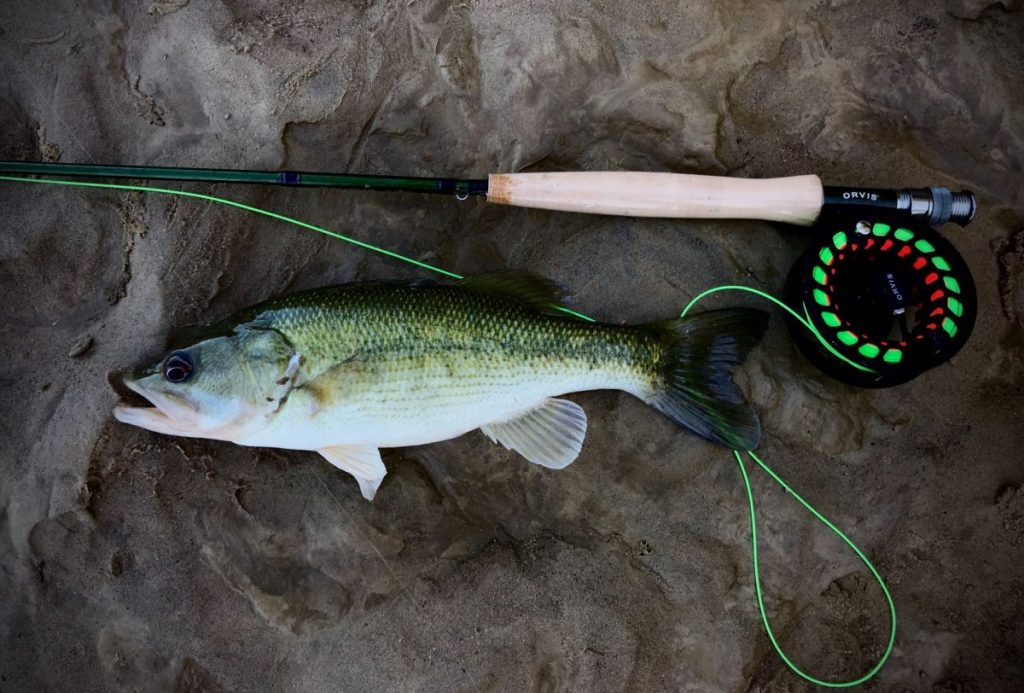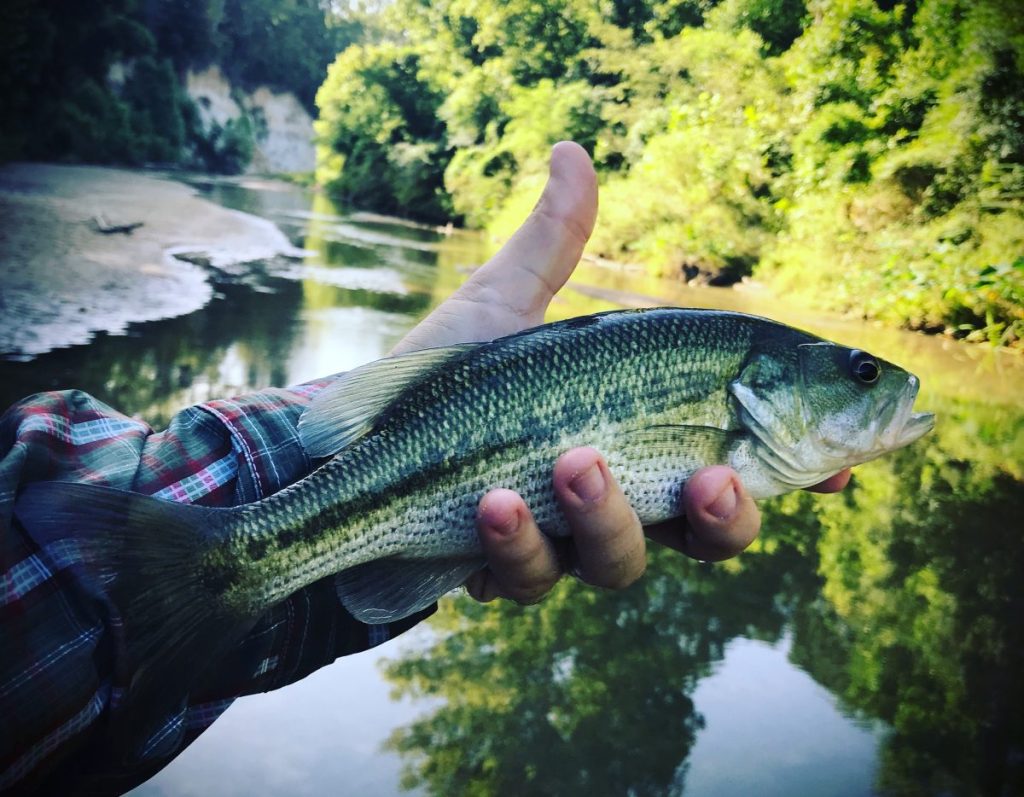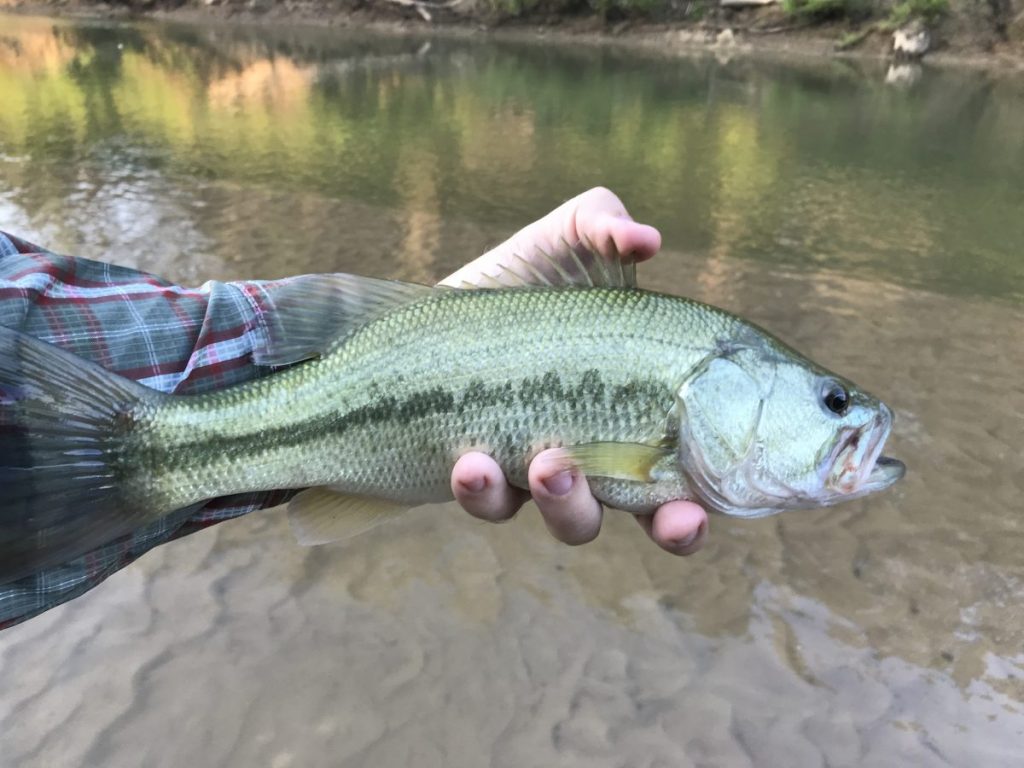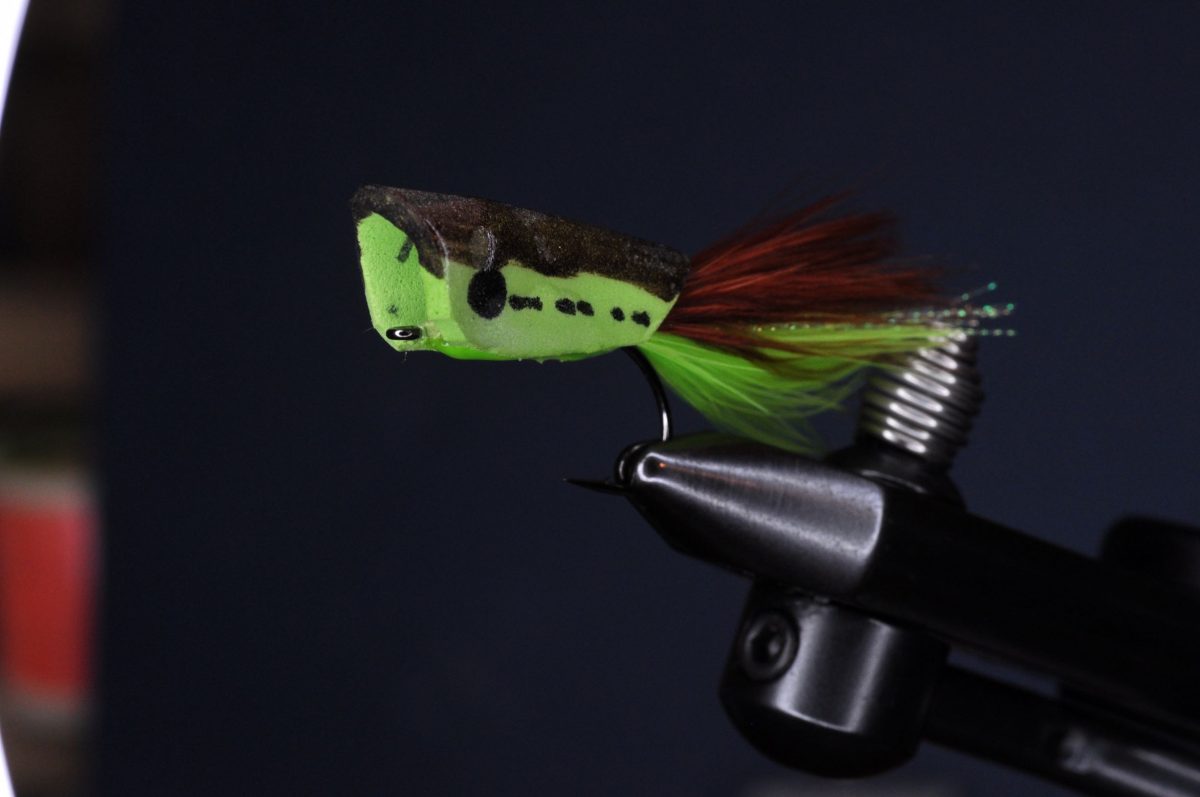
Looking for something else?
Try one of these!
The Crease Fly Step-by-Step:
Wading small streams with a fly rod in hand became common practice for me in 2020. With out of state travel largely off the table, I was limited to options closer the home and by necessity decided to expand my horizons. Turning away from the gulf, I began exploring the smaller streams and bayous of Louisiana’s Florida parishes and was pleasantly surprised by the quantity and diversity of fish these waters had to offer. And, as an added bonus, wet wading a small stream sure beats baking in the hot sun kayak fishing the marsh in mid July.
The majority of fish I encountered on these waters trended towards the smaller side. However, every once in a while a larger fish (generally spotted bass) in the 1+ lbs class would take a swipe at my terrestrial or small streamer. Though I lost more of these fish than I landed on my 3wt, I found myself increasingly interested in targeting these fish more directly.
Pattern Search
Turning to google for advice, I quickly stumbled across Mountain to Marsh’s post chronicling his friend Blake’s successful quest to catch the Louisiana state record (Fly Rod division) spotted bass.
To my surprise, they were not relying on streamers, but a Crease Fly. Though I had always associated the pattern with Striped Bass, their downsized version clearly did the trick on smaller waters as well. Trusting in their methods, I began attempting my own. Testing a few different colors and material along the way, I eventually found myself mirroring the design (both materials and colors) that they had recommended. Simply put, it became obvious there was no need to reinvent the wheel. Their variant of the pattern worked, and the pattern presented below is very close to that.
 Gamakatsu B10S Stinger #2-4 Gamakatsu B10S Stinger #2-4 |  140 Denier (Chartreuse) 140 Denier (Chartreuse) |  Marabou (Brown over Chartreuse) Marabou (Brown over Chartreuse) |
 Krystal Flash (Pearl) Krystal Flash (Pearl) |  2-mm Foam (Chartreuse) 2-mm Foam (Chartreuse) |  UV Resin or 5-minute Epoxy UV Resin or 5-minute Epoxy |
 Copic Marker Copic Marker |  Super Glue Super Glue |
Disclosure: This post contains affiliate links. A small commission may be paid for purchases made through these links.
The Crease Fly Step-by-Step Tying Instructions:
(Mobile Viewers: Click images to enlarge)
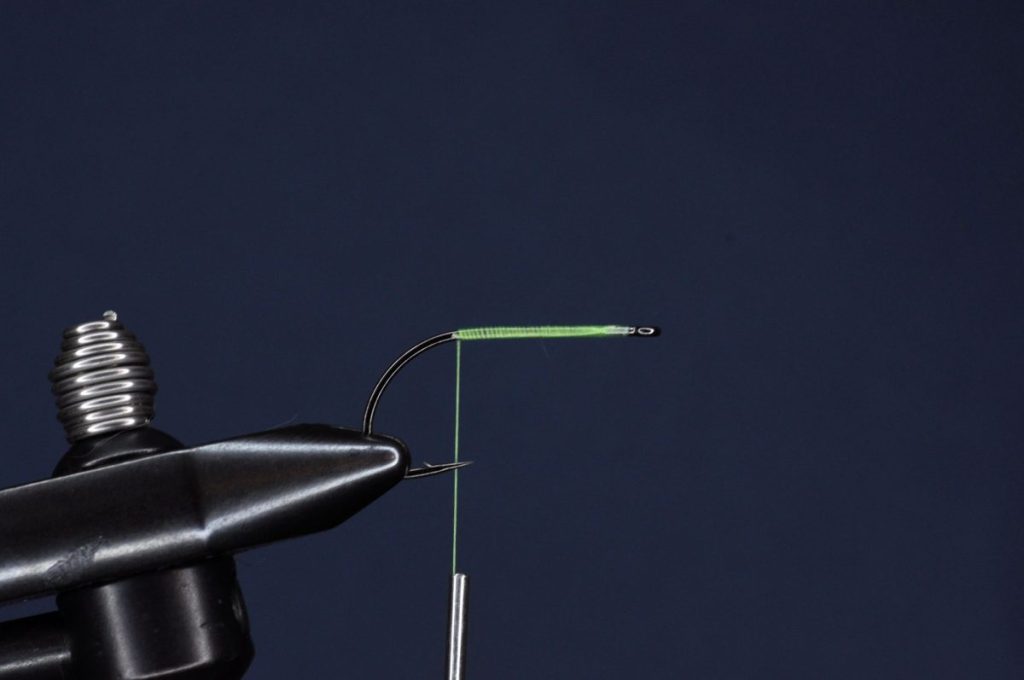
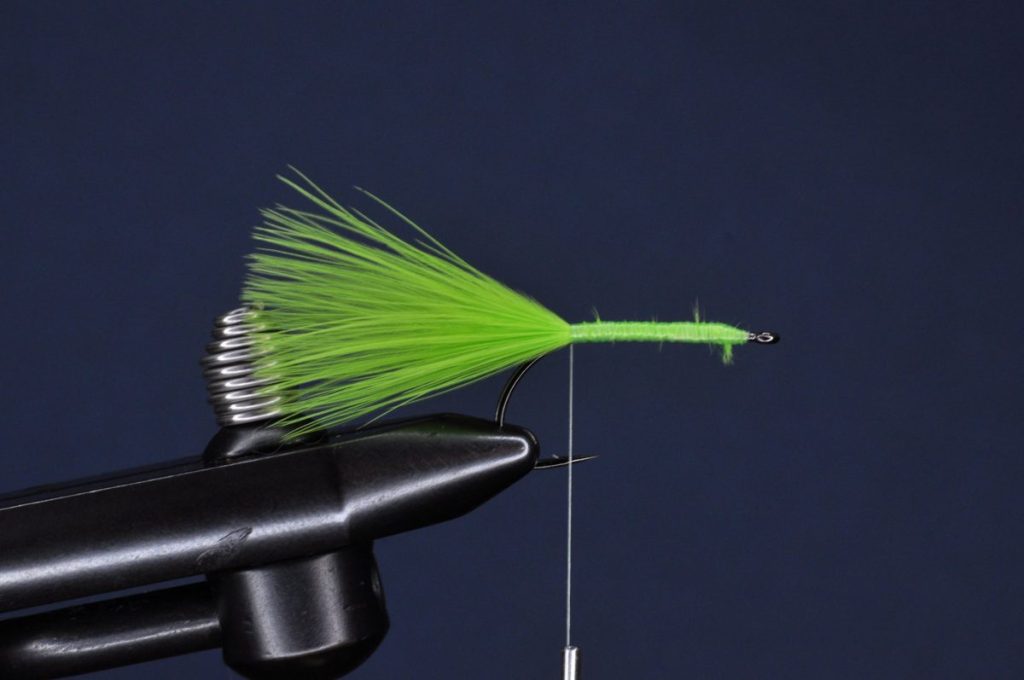
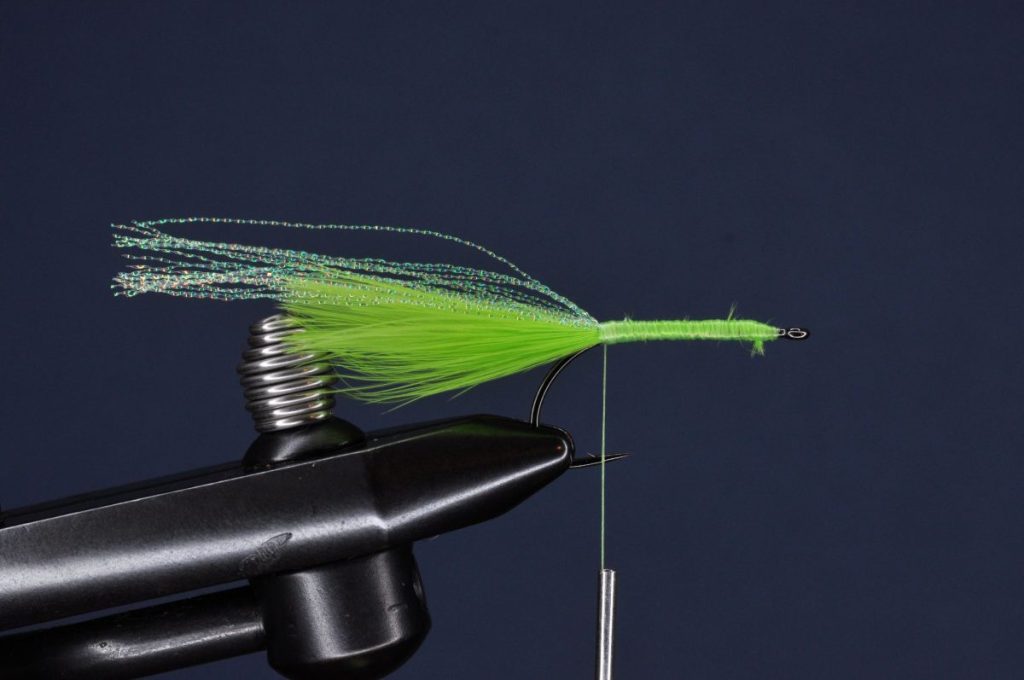
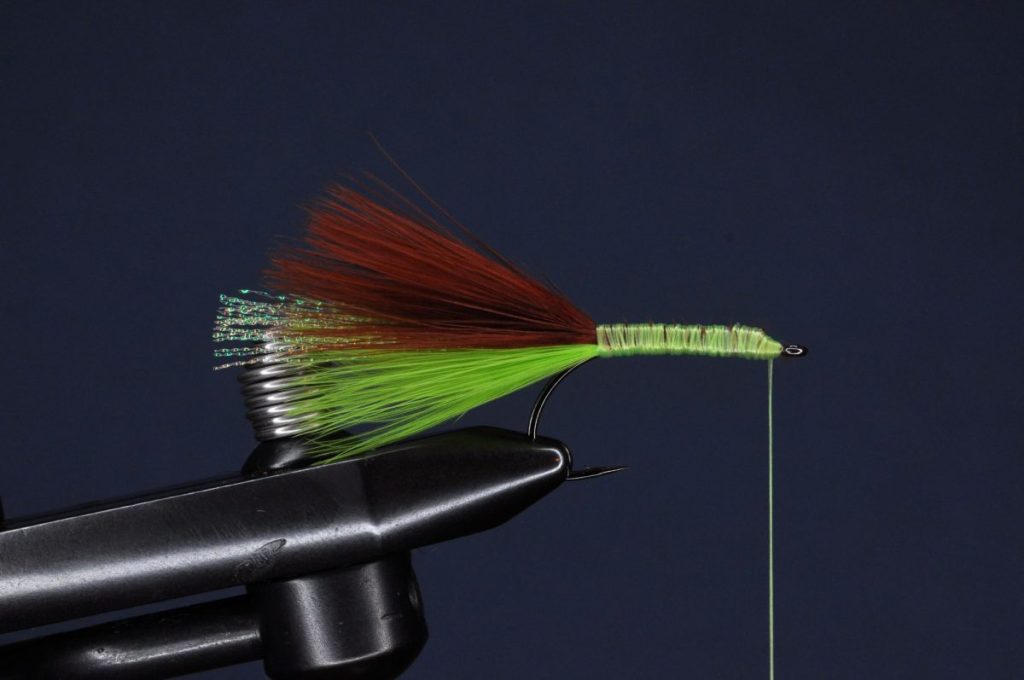
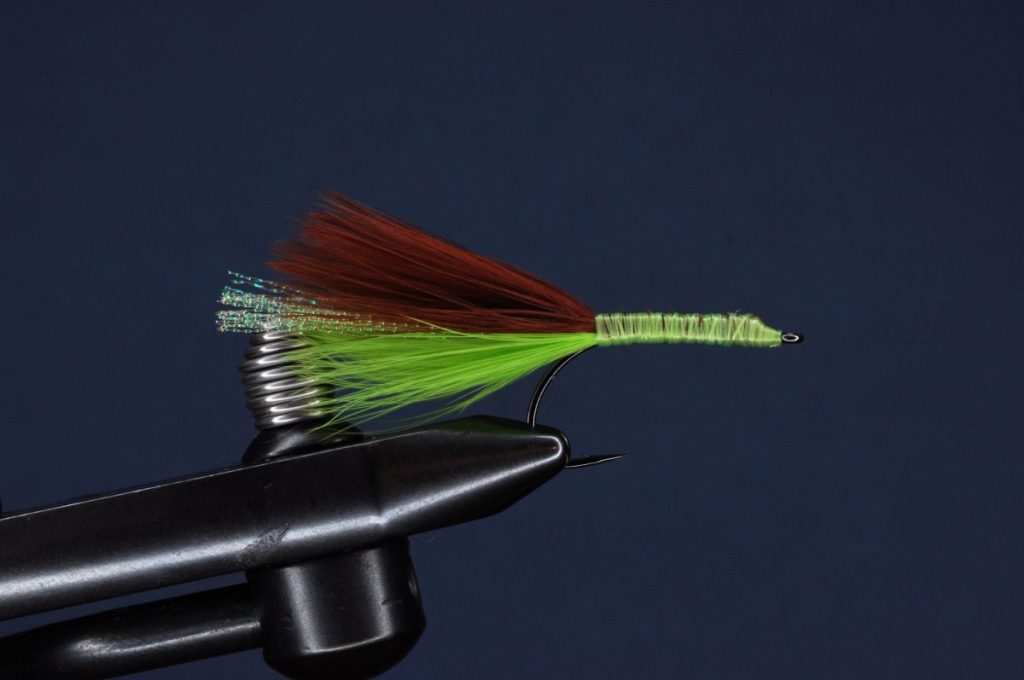
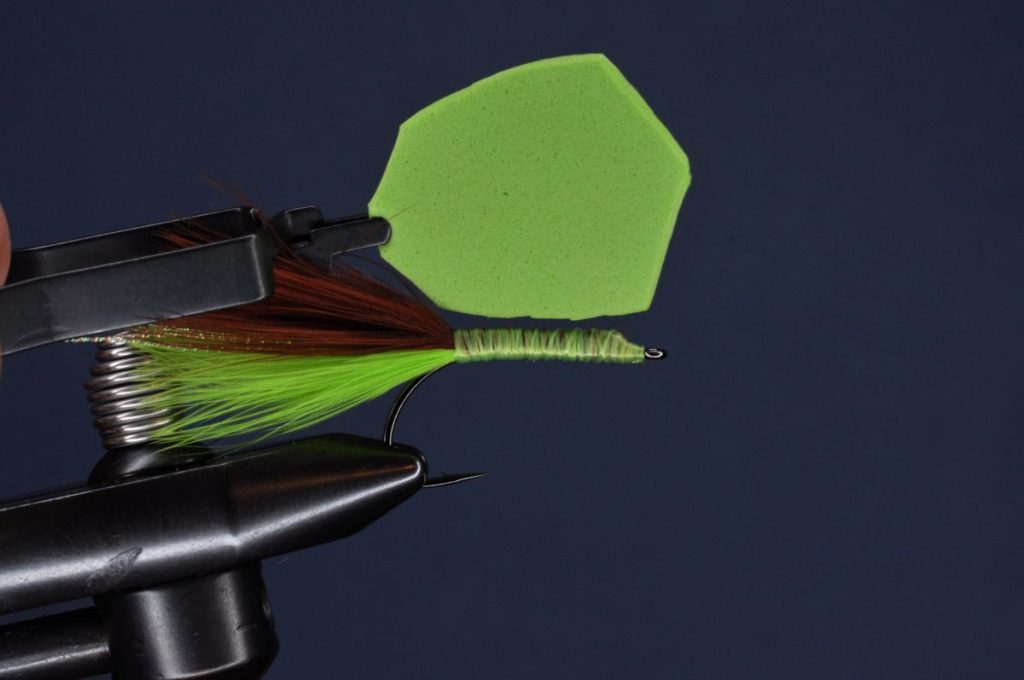
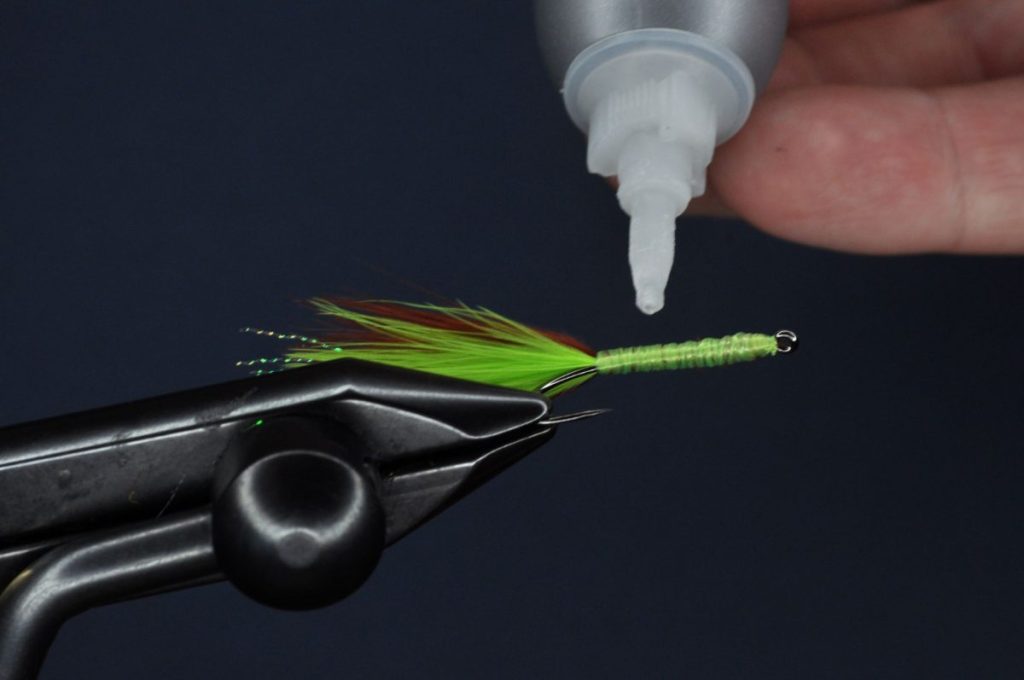
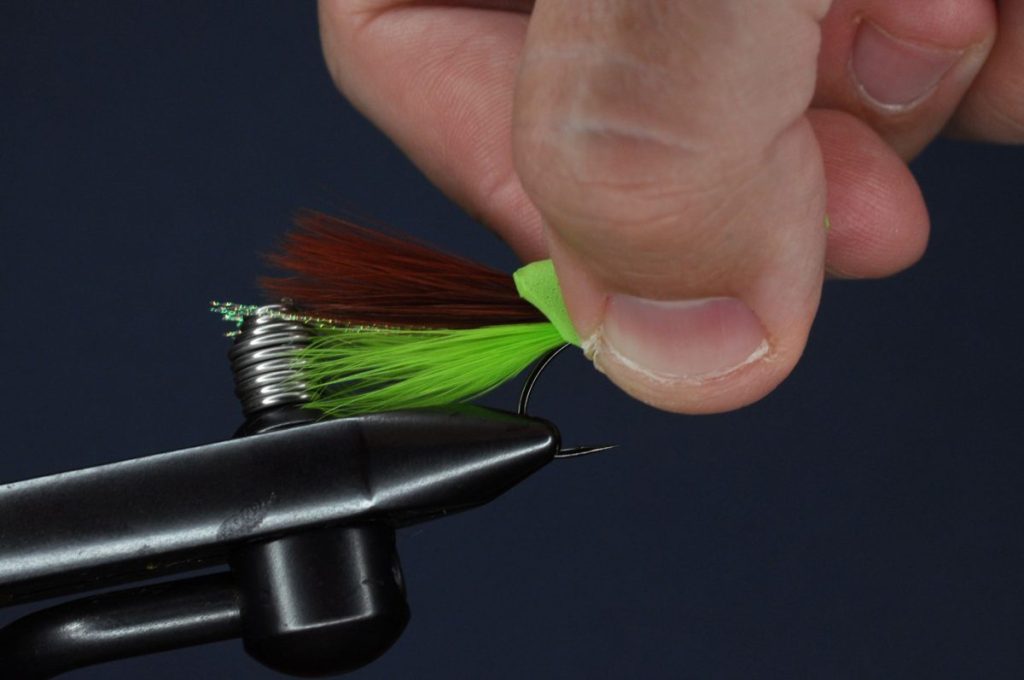
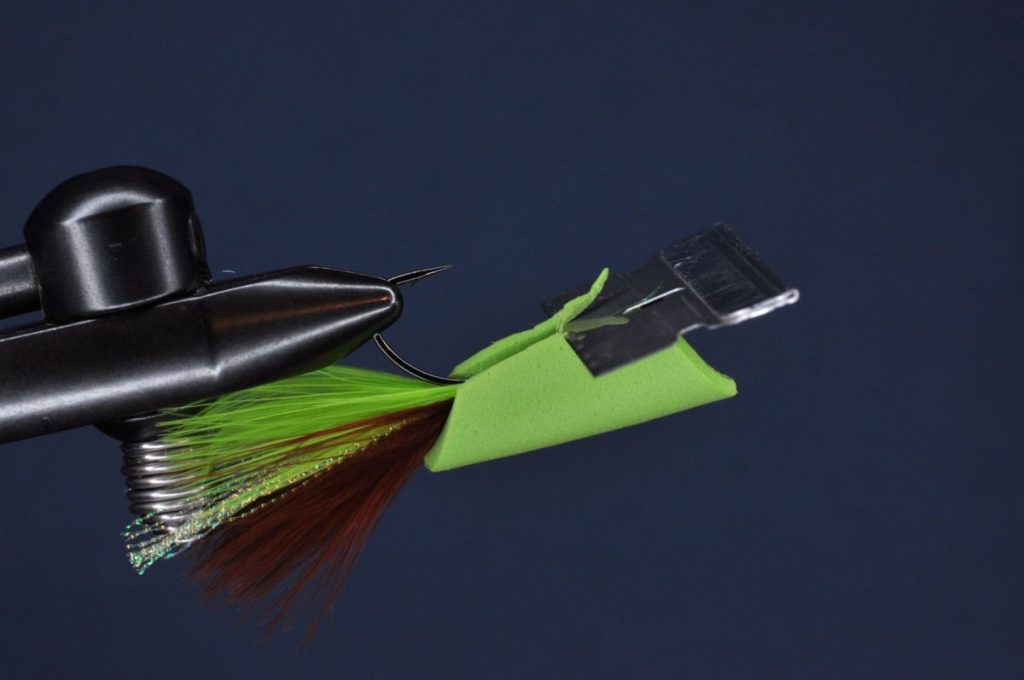
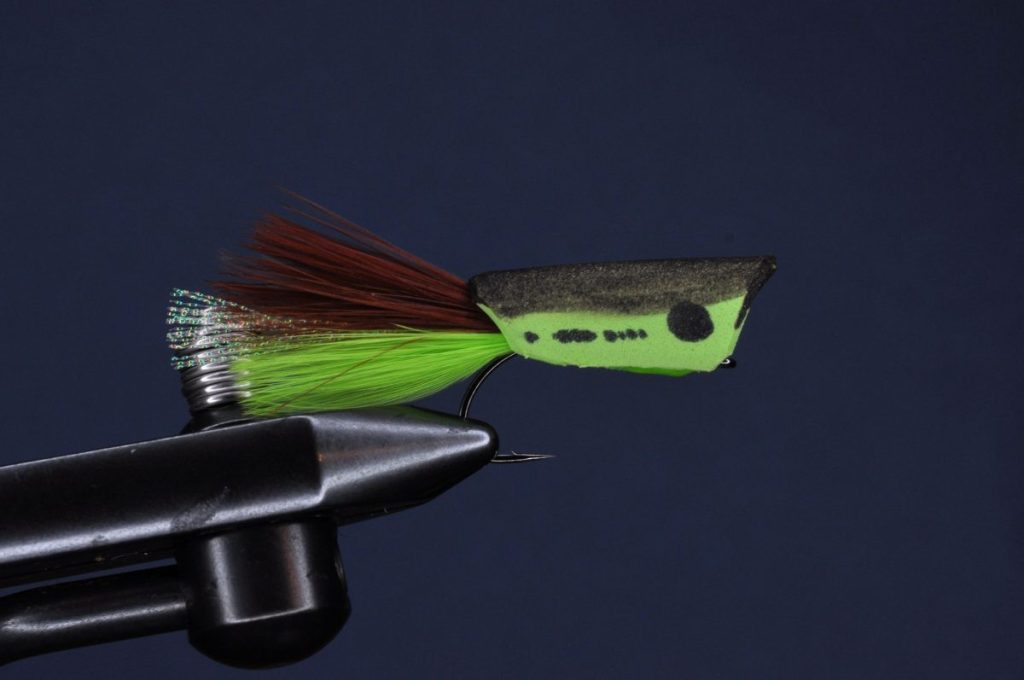
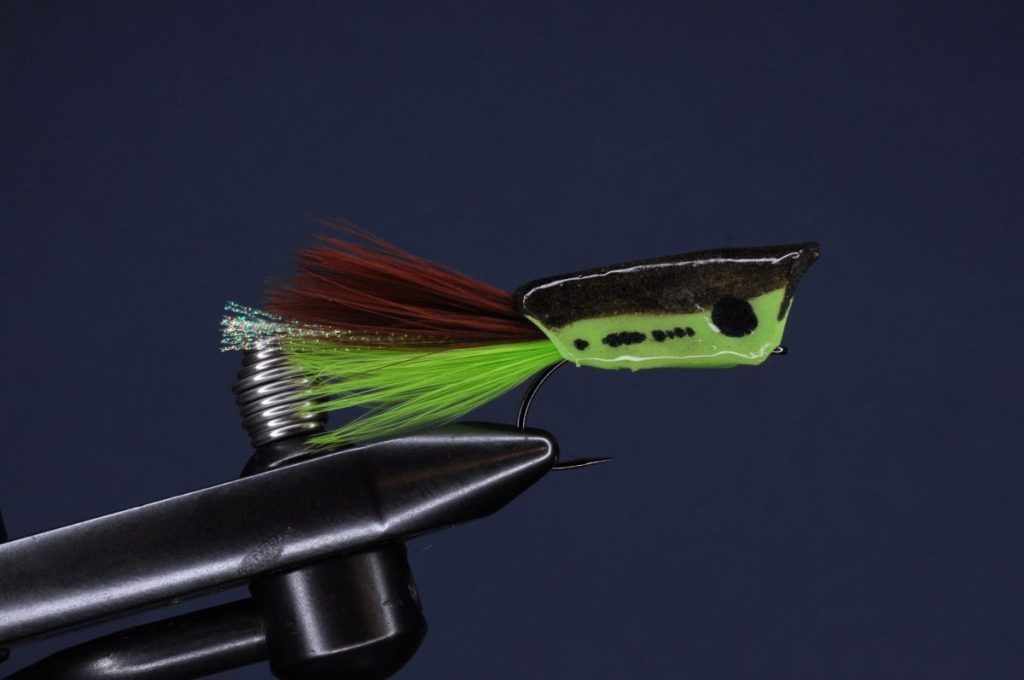
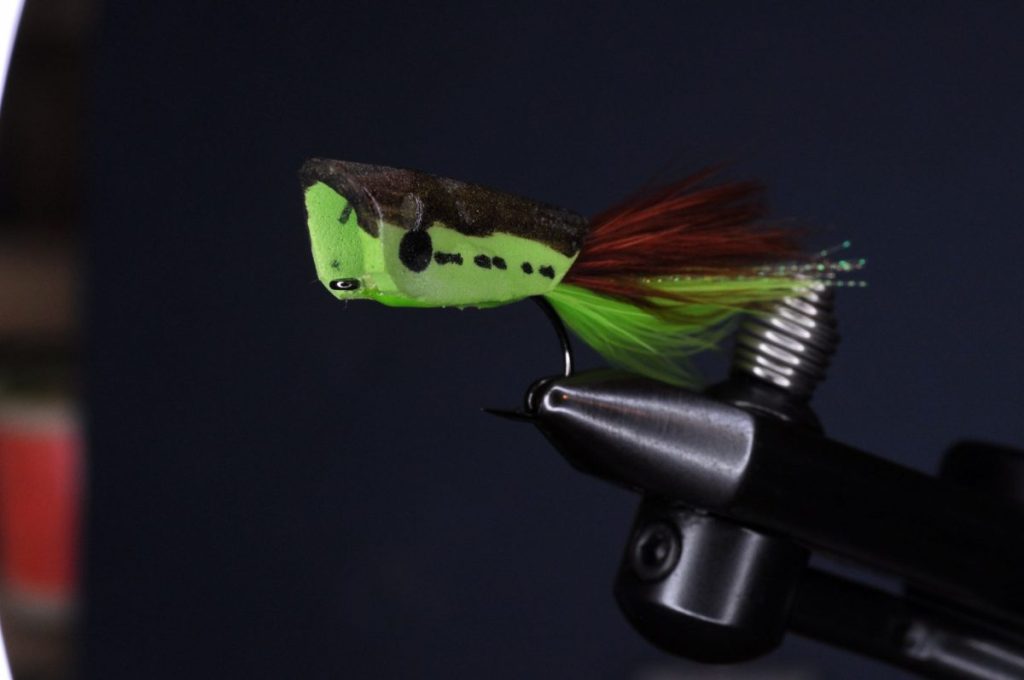
Tips and Tricks
- Counterweight – If your initial attempts at this pattern have a tendency to list to the side, consider adding a strip of lead-free wrap to the underside of the hook. Not only will this serve as counterweight to the top heavy foam, but it will also cause the fly to ride slightly lower in the water. The result is a more substantial “Pop” as a larger portion of the foam crease is riding below the water line.
- Downsizing – Consider tying some “mini” crease flies if, like me, you enjoy using ultralight rods on smaller streams. While these smaller versions (I tied them on a Gamakatsu SC15 in size 4 of all things) may not entice the larger bass with the same frequency, they’re like a dinner bell for smaller bass and green sunfish.
- Save a Stencil– Cutting the craft foam body for this pattern requires a bit of trial and error to find the size/shape/dimensions you prefer. Once you’ve settled on a pattern you like, consider saving a piece of pre-cut craft foam to serve as a stencil. It will make life much easier in the long run. I may take this a step further in the near future and save my preferred design as a pattern on my wife’s Cricut.
Species Caught on the Crease Fly to Date:
- Spotted Bass
- Largemouth Bass
- Green Sunfish
- Spotted Gar
Proof of Concept
While I previously shared the exploits of one particular day in October, this pattern produced for me throughout 2020. Both largemouth and spotted bass have fallen prey to the pattern. And though I’ve yet to land anything near Blake’s state record fish, I’ve consistently managed fish over 1 lbs and lost a few that may have been slightly larger.
This little crease fly has been an exceptionally productive pattern and one I’m thankful Mountain to Marsh was kind enough to share. With any luck it can be as productive for those who read this as it has been for me.
Tight Lines!
-Chris
